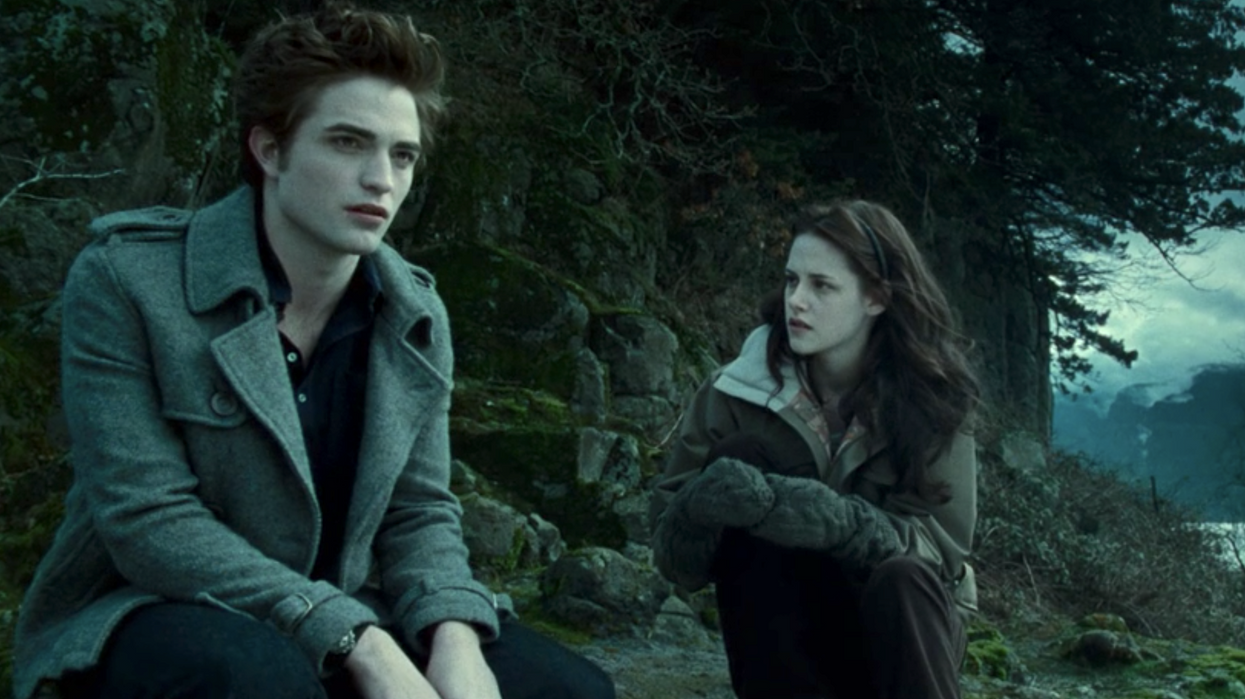This Is Why You Should Appreciate the Cinematic Filmmaking of 'Twilight'
It is time to appreciate Twilight for the indie-fantasy-film noir that it is.

Twilight took the world by storm, becoming a behemoth franchise that was both loved, hated, and criticized for its flimsy story and toxic relationships. As someone who grew up with the Twilight saga and was the target demographic of the franchise, I found myself both loving and hating the series for everything that it encapsulated about love and fantasy.
For those of you who avoided the Twilight craze or dismissed its existence, there is a clear separation from the first film to the rest of the saga in tone and direction, largely thanks to the work of Catherine Hardwicke. Hardwicke's style breathed life into the small town and lifeless story, turning the YA fantasy novel into art.
From the blue-hued cinematography to the use of a hand-held camera, Twilight’s mise-en-scène shines through. Let’s break down why you should celebrate Hardwicke’s Twilight for its creativityrather than hold the film to the same standard as the other, much less superior films in the saga.
That infamous blue filter
Compared to the other films in the saga, Twilight has a distinct blue filter over the film that makes the world of Forks feel as cold as Edward’s (Robert Pattinson) skin. Hardwicke used this blue-green coloring in her debut film, Thirteen, to establish a gritty perspective into teenage angst and rebellion.
Hardwicke’s Thirteen represents the bleakness of a young teen’s life, while Twilight, surrounded by dense forest and mountains, used the wash to emphasize the landscape. As a viewer, you can almost reach out and touch the world of Twilight.
The color tone also emphasizes the pale complexion of the vampires, and that blue hue is washed away with New Moon which gives a warmer look to highlight the werewolves and their connection to the land. The atmosphere changes with Bella’s (Kristen Stewart) changing relationships, shifting the world to revolve around the person who is receiving the most attention.

The handheld camera
Hardwicke wanted to tell the simple story of Twilight interestingly and engagingly. Using a hand-held camera, a technique Hardwicke carried over from Thirteen, she can capture the awkwardness of young love in a cinéma vérité style—a documentary style that uses the camera to unveil truth or highlight a subject who hides behind reality.
The camera is almost a character itself, becoming a fly on the wall that watches the young couple trying to find gravity in each other’s orbits.
As the couple moves closer to each other, physically and emotionally, the camera becomes intimate, capturing the uncertainty melting away with close-ups.
How you decide to use the camera within the story’s world can affect how the themes are displayed. For Twilight, the camera brings to life whirlwind feelings of naive love while highlighting the adolescents and dangers that accompany it.

A moment of appreciation for chiaroscuro lighting
The sequence that highlights the artistic style of Hardwicke is when Edward is playing "Bella’s Lullaby" on the piano while Bella watches. It is the heightened reality of their romance that drenches the room with chiaroscuro lighting, and the world falls away until it is just the two of them.
The use of chiaroscuro lighting is not only visually dynamic but attempts to evolve the teen romance story into a tale of forbidden love that mimics film noir or arthouse films. In a way, Twilight can relate closely to film noir, as it follows a girl falling in love with a gender-swapped femme fatale and the harrowing journey that almost kills the main character.
Chiaroscuro lighting returns toward the end of the film with Edward and the tracking vampire James (Cam Gigandet). The ballet studio is dark as blinding white light bleeds through the arched windows. It’s cold, desolate, and hopeless until James’ body is set on fire and warmth is invited into the scene.
The world of Twilight is dramatic, and Hardwicke reflects this through the visual language of the film.

In all fairness, there is a lot to dislike about the Twilight saga, but we must tip our hats to Hardwicke for her creativity and fight to make characters like Bella Swan stronger than how she was written.
I love Twilight and the first two acts of New Moon because of the artistic choices made by the directors to showcase the extreme emotions of toxic young love. The other films, unfortunately, are largely forgettable and with little to no artistic style.
Rewatch Twilight and you will be able to see the beauty of the filmmaking shine through Stephenie Meyer’s weak story. Hardwicke explored adolescence in an interesting and personal way, and it is time we acknowledge that beauty.
What’s your favorite guilty pleasure movie? Let us know why you love the movie and why you think it should be celebrated in the comments below!
Source: Screen Queens











